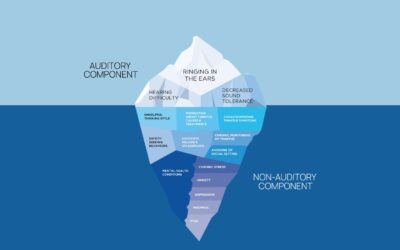Otoacoustic Emissions or OAEs in audiology are most commonly used in specific applications like newborn hearing screening. However, with advances in equipment technology and the relative ease and time efficiency of administering OAEs, it is worth considering other clinical applications. There is a valid argument for the inclusion of OAEs within the routine rehabilitative diagnostic hearing assessment since OAEs are often more sensitive to changes in the health of a person’s cochlea than the audiogram is.
Currently, distortion product or DPOAEs are most common for rehabilitative applications. Let’s jump into five practical applications of OAEs in the hearing clinic:
- Cross-Check Principle: One of the most valuable applications is cross-checking. Cross-checking means never relying on one auditory test alone to diagnose, manage, and inform treatment for a patient until it is confirmed or cross-checked with one or more independent measures. Pure tone audiometry is a behavioural test and is susceptible to test-retest variability. As a cross-check, OAEs can also aid in identifying false or exaggerated hearing loss, allowing clinicians to objectively identify malingerers of particular importance in workplace injuries or other medicolegal cases.
- Site of Lesion Information: OAEs can give important diagnostic information on the site of lesion. We know that OAEs are site-specific and test the cochlea and, more precisely, the outer hair cells. Therefore, they can help distinguish between cochlear and retro-cochlear dysfunction. This information can aid in the proper diagnosis and treatment of the patient.
- Hearing Loss Monitoring: Two scenarios where OAEs may be used to monitor changes in hearing loss over time are occupational noise exposure and ototoxic drugs. Since the outer hair cells are most sensitive to ototoxic medications, this is a natural fit for OAEs, with an objective change in amplitude of 2.4dB or more indicative of an ototoxicity effect (Young & Ng, 2023). For noise exposure, OAEs are an excellent fit for monitoring and can even be used as the stand-alone test in cases where a normal audiogram has been established.
- Subclinical Noise Damage: When you see a patient with normal hearing on their audiogram but a notch at 3 or 4 kHz in OAEs, this is an opportunity to counsel your patient on their recreational and occupational noise exposure and how to protect their ears from further damage.
- Tinnitus: DPOAE amplitudes are consistently reduced, particularly at 6 and 8 kHz, in patients with tinnitus, even in the presence of a normal audiogram (Young & Ng, 2023). We can use this information to help explain a patient’s tinnitus and begin rehabilitation. OAEs can help us validate their tinnitus and treatment (Young & Ng, 2023).
There you have it! Five compelling clinical applications for using OAEs in any rehabilitative hearing clinic to improve your offerings, stand out, and provide better care. If you are interested in this topic, we have a FREE micro course on OAEs in the hearing clinic which elaborates on these points and reviews OAE best practices and current equipment. This course is 15 min and is approved for continuing education credit! Join our free Learn On membership to take this course today!





